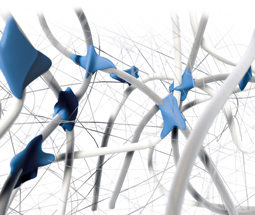 In response to increasing concerns about the use of certain chemicals in the production of nonwovens and textiles, Clariant is developing new solutions which are allowing producers to adopt more sustainable operations and processes.
In response to increasing concerns about the use of certain chemicals in the production of nonwovens and textiles, Clariant is developing new solutions which are allowing producers to adopt more sustainable operations and processes.
At last week’s Techtextil show in Frankfurt, the company put the emphasis on three key functionality areas – repellence and release, flame retardancy and stability and resistance.
Nuva N C6-based products, first introduced in 2006, support the gradual switch away from traditional long-chain fluorotelomer products which, as an unintended manufacturing by-product, may contain PFOA (perfluorooctanoic acid) at trace levels.
Designed to achieve state-of-the-art stain management properties, Nuva N is extremely easy to handle in processing, imparting long-lasting soil repellency and release effects, while being non-sensitive in respect of its compatibility to other finishing chemicals.
Along with improved sewability and no impact on the breathability of the fabric, the agent has a positive effect on the abrasion resistance and tear strength demanded of many materials in the technical textiles field.
Clariant is continuing to expand the Nuva range as well as increasing production capacity. Nuva 1811, Nuva N2114 and Nuva N2155 all meet the bluesign criteria.
Fluorine free
Meanwhile, entirely fluorine-free chemistry and long-lasting water repellency – two benefits that have been previously unattainable in a single solution – come together in Arkophob FFR.
This technology is an efficient alternative to conventional fluorocarbon-based repellency products, and its carefully-selected active ingredients and their special formulation allow a durable and even film formation on the surface of the fabric.
Arkophob FFR has been extensively tested by Clariant experts in respect of its water repellency, in addition to its wash permanency and the softness or ‘hand’ of the resulting fabrics. In spray tests on 100% cotton twill fabric, for example, it clearly outperforms other fluorine-free products in terms of water repellence, and its performance is very close to C6 fluorochemicals. It meets the bluesign criteria and, when correctly used, also meets the OekoTex standard.
Flame retardants
Firefighters, the military, and others working in extreme environments and weather, require performance that protects – not just against the elements, but against hazards including fire. Furthermore, requirements in areas such as home textile and construction are getting more stringent and require high attention during product development. Those sectors therefore welcome the reassurance provided by technologies such as Clariant’s high performance Pekoflam flame retardants.
Until quite recently, the common chemistries for fire-proofing man-made fabrics were based on organic halogens. Significantly, the development of Pekoflam began back in 1997 when the debate about the potentially harmful effects of halogen-based chemistry to both human health and the environment was only just beginning.
This gave Clariant a clear advance with its halogen-free* Pekoflam range, which is primarily based on phosphorous chemistry as a backbone. In the development of synergistic additives to achieve broad application properties comparable to existing halogen-based products, chemical know-how proved as important as the deeper understanding of flame retardant physics and related thermodynamics.
The now-established Pekoflam range is consequently ideally suited to helping customers to face today’s ecological challenges and fulfill ever stricter safety regulations – whatever the application.
Pekoflam STC and Pekoflam HFC are new coating additives displaying high efficiency and an improved ecological profile when compared to nitrogen and/or phosphorous based commodity chemicals.
Ultra-low formaldehyde
Clariant’s polymer dispersions are highly valued by technical textile finishers, whether in coating, spraying, foaming, lamination or impregnation. The tailor-made solutions for customer-specific requirements allow range from soft to hard, from elastic to rigid, from hydrophilic to hydrophobic and from impermeable to breathable.
Crosslinking is used to reinforce the dimensional web created by the polymer, under specific conditions of temperature and acidic catalysis, to provide a range of benefits. In its constant efforts to reduce formaldehyde, Clariant has especially focused on developing self-crosslinking products. Not only do they offer low formaldehyde solutions per se, but they also do not need to be used with melamine resins – which can be a source of free formaldehyde.
The company’s Appretan E range of ultra-low formaldehyde polymer dispersions has been formulated to provide flexibility, strength, stability and resistance in textile and nonwoven applications.
In addition to a general improvement in properties, the key performance attributes of this self-crosslinking dispersion are its high resistance to water, solvents, alcohol, and elevated temperature.
For the production of textiles that are required to comply with very strict eco-toxicological regulations, Clariant has also developed Appretan NF formaldehyde-free dispersions.
“Clariant’s commitment to establishing long-lasting customer relationships, backed by extensive customer service and support, ensures we deliver products that not only advance the performance of technical textiles with measurable benefits, but also assist producers in adopting more sustainable operations and processes,” says Jochen Schmidt, head of technical service EMEA at Clariant Textile Chemicals. “These are key elements for the success of our customers success in today’s challenging business environment.”